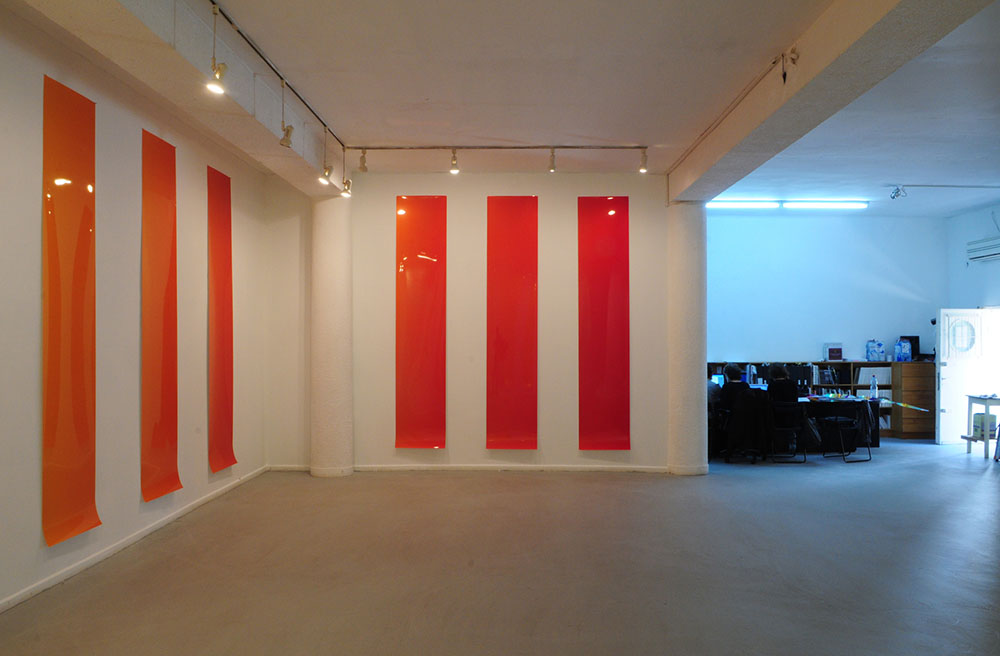“The technique employed in Keepers of the Light abstains from describing objects or creating images. The exhibit consists of almost monochromatic ribbons, or photographic strips, that were generated without a camera and without any intention of representing something tangible. Toister revitalizes the discussion of colour as a value in its own right, whilst the methodical arrangement within the gallery cannot but raise the issue of the utility of colour as well as its use as a marker, an identifier and a means of camouflage. Toister’s technique, (the use of coloured ribbons of equal width, each chromatically shifted along a gradual scale and set at even intervals) is a rejectionist stance that discards the photographic image and questions the objectivity of the photograph. It is based on the direct use of papers that are displayed in such a way as to make them dependent on the interior format of the gallery… Toister uses this exhibition to enlarge on the concept of photography as an architectural or almost sculptural pursuit… Now that it is clear that this is photography that has very little to do with representing the tangible world, we can discuss the way in which Toister’s work does nevertheless represent reality without actually concretizing it – a representation of reality that is not actualized. In my conversations with him, Toister spoke of the façade of the Dan Hotel on the Tel Aviv beachfront as a source of inspiration. As in this exhibition, the façade is divided into vertical monochromatic strips. The indirect reference to Agam’s façade permits a discussion of the present enterprise as a kind of photographic reconstruction in which a façade becomes an inner lining – a coating that covers the walls of the gallery – and, no less, enfolds it too. Yanai’s work acquires a dual architectural aspect in that it refers both to the interior space of the gallery and to the physical composition of the world. They both undergo a transformation: they are built, demolished and built anew. The affinity that Toister’s work shares with the façade of the Dan Hotel makes one aware of processes of identification and perception, whether through the medium of photography or non-material memory. But it refrains from turning the exhibition into a representation of the Agam façade, or bearing any outward sign of similarity or difference.”
(Ory Dessau)

